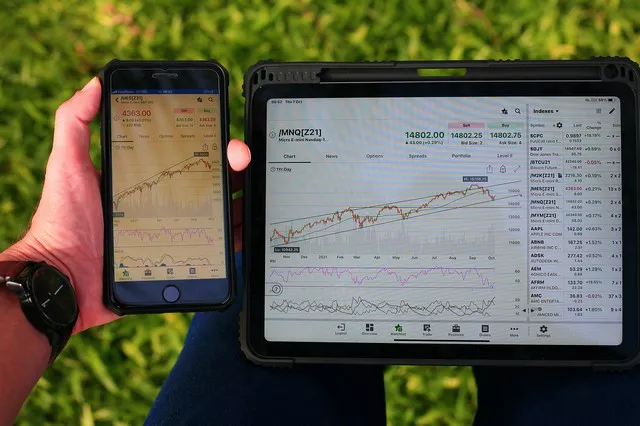As investors and traders navigate the dynamic landscape of precious metals, the future outlook for silver prices remains a subject of significant interest. Silver, often dubbed “the poor man’s gold,” has long been valued for its industrial applications and investment appeal.
Current State of Silver Prices
To comprehend the future outlook for silver prices, it is imperative to assess the current state of the market. Silver prices are influenced by a multitude of factors, including supply and demand dynamics, geopolitical events, and macroeconomic trends. At present, silver prices reflect the interplay of these elements, making it essential for market participants to stay attuned to unfolding developments.
The Role of Futures Markets in Price Discovery
Futures markets play a pivotal role in the price discovery mechanism for silver. Silver futures contracts are actively traded on commodities exchanges, such as the COMEX (Commodity Exchange) in the United States. These contracts allow market participants to speculate on the future price of silver, providing a platform for hedging, risk management, and price exploration.
Factors Influencing Silver Prices
Understanding the future outlook for silver prices requires a comprehensive analysis of the factors that exert influence on this precious metal. Key drivers include industrial demand, as silver is widely used in electronics and various manufacturing processes. Additionally, silver prices are responsive to macroeconomic indicators, such as inflation rates, interest rates, and overall economic health. Geopolitical tensions and fluctuations in currency values also contribute to the complexity of silver price dynamics.
Silver as a Safe-Haven Asset
Silver, like gold, is often considered a safe-haven asset, attracting investors during times of economic uncertainty. As global uncertainties unfold, such as geopolitical tensions or financial crises, silver prices tend to experience upward pressure. This safe-haven appeal positions silver as a valuable component of diversified investment portfolios.
Industrial Demand and Silver Prices
Unlike gold, a significant portion of silver demand comes from industrial applications. Silver’s unique properties, including its conductivity and reflectivity, make it indispensable in electronics, solar panels, and various medical and technological innovations. Changes in industrial demand, driven by advancements in technology or shifts in manufacturing trends, can significantly impact silver prices.
Investor Sentiment and Speculative Activity
Investor sentiment and speculative activity also play a crucial role in shaping the future outlook for silver prices. Silver futures attract both institutional and retail investors seeking exposure to this precious metal. Speculative trading, influenced by market sentiment, can lead to short-term price volatility, creating opportunities for both profit and risk.
Central Bank Policies and Monetary Stimulus
The monetary policies of central banks and their responses to economic challenges have a direct impact on precious metals, including silver. Policies such as interest rate adjustments, quantitative easing, or currency devaluation can influence investor perceptions of silver as a store of value. Traders closely monitor central bank decisions for signals that may affect the future trajectory of silver prices.
Inflation and Silver as an Inflation Hedge
Silver has historically served as an inflation hedge, preserving wealth during periods of rising prices. In times of inflationary pressure, investors often turn to precious metals as a store of value. The future outlook for silver prices is intricately linked to inflationary expectations, making it essential for market participants to monitor inflation trends and economic indicators.
Technological Advances and Silver Demand
Ongoing technological advances contribute to the increasing demand for silver in various industries. The rise of renewable energy technologies, electric vehicles, and 5G telecommunications networks underscores silver’s role in shaping the future. Traders and investors assessing the future outlook for silver prices must consider the implications of technological advancements on industrial demand.
Environmental and Ethical Considerations
The growing emphasis on sustainability and ethical sourcing practices in recent years has also impacted the silver market. Investors and consumers alike are increasingly conscious of the environmental and social implications of their choices. This shift in mindset may influence the future demand for sustainably sourced silver and, consequently, impact prices.
Global Economic Conditions
The overall health of the global economy is a fundamental factor influencing silver prices. Economic growth, trade dynamics, and consumer confidence all contribute to the demand for silver. As the global economy undergoes changes and faces challenges, the future outlook for silver prices will be shaped by the broader economic context.
Geopolitical Events and Silver Prices
Geopolitical events, such as trade tensions, geopolitical conflicts, and diplomatic developments, can have a profound impact on silver prices. These events introduce uncertainties that drive investors toward safe-haven assets like silver. Assessing geopolitical risks is integral to gauging the potential future trajectories of silver prices.
Conclusion
In navigating the future outlook for silver prices, market participants must adopt a holistic approach, considering a myriad of factors that collectively shape the silver market. The interplay between industrial demand, investor sentiment, technological advances, and global economic conditions creates a complex tapestry that requires careful analysis. As a crucial component of the precious metals landscape, silver remains subject to a dynamic array of influences, with futures markets serving as a critical platform for price discovery and risk management. Staying informed and adapting strategies in response to evolving market conditions are key components of successfully navigating the future of silver prices.


